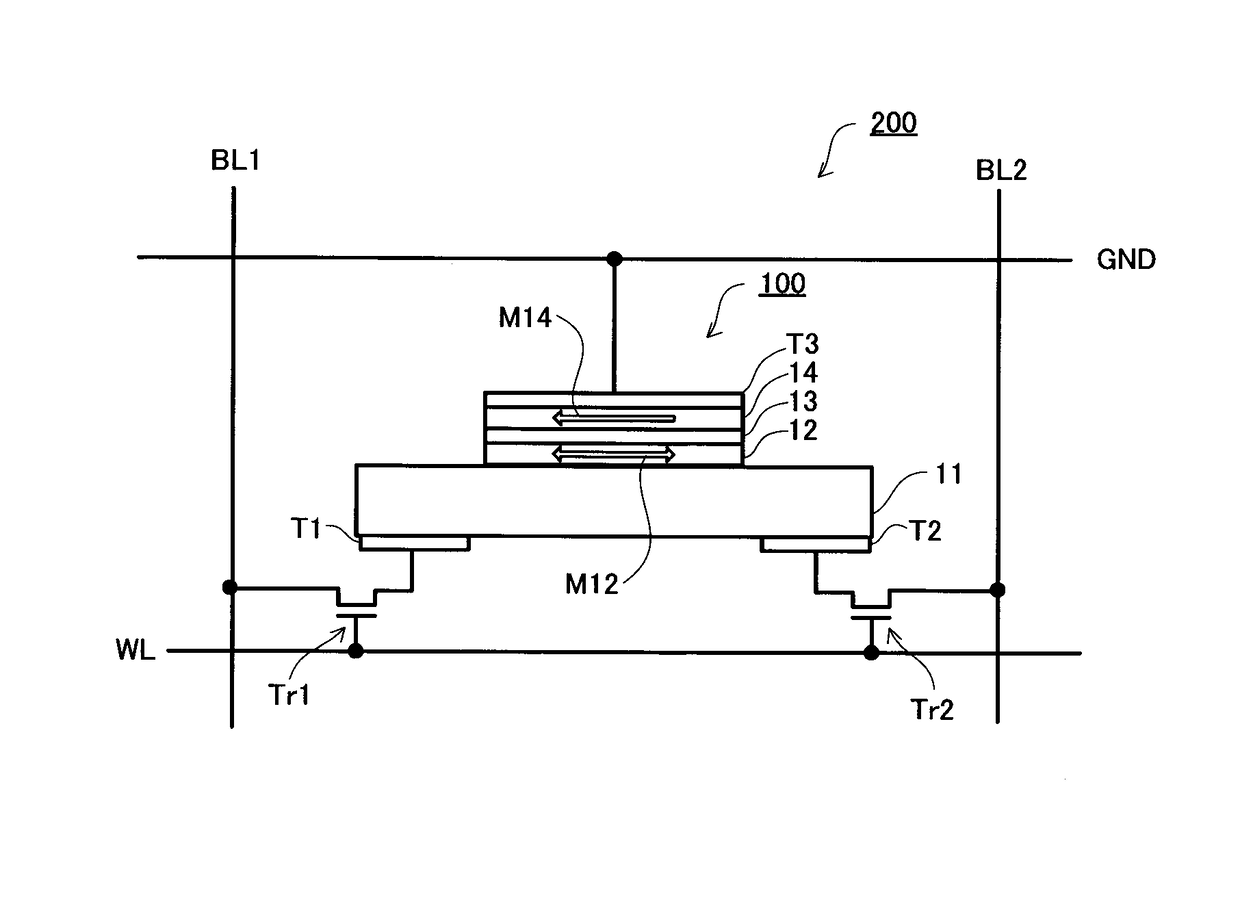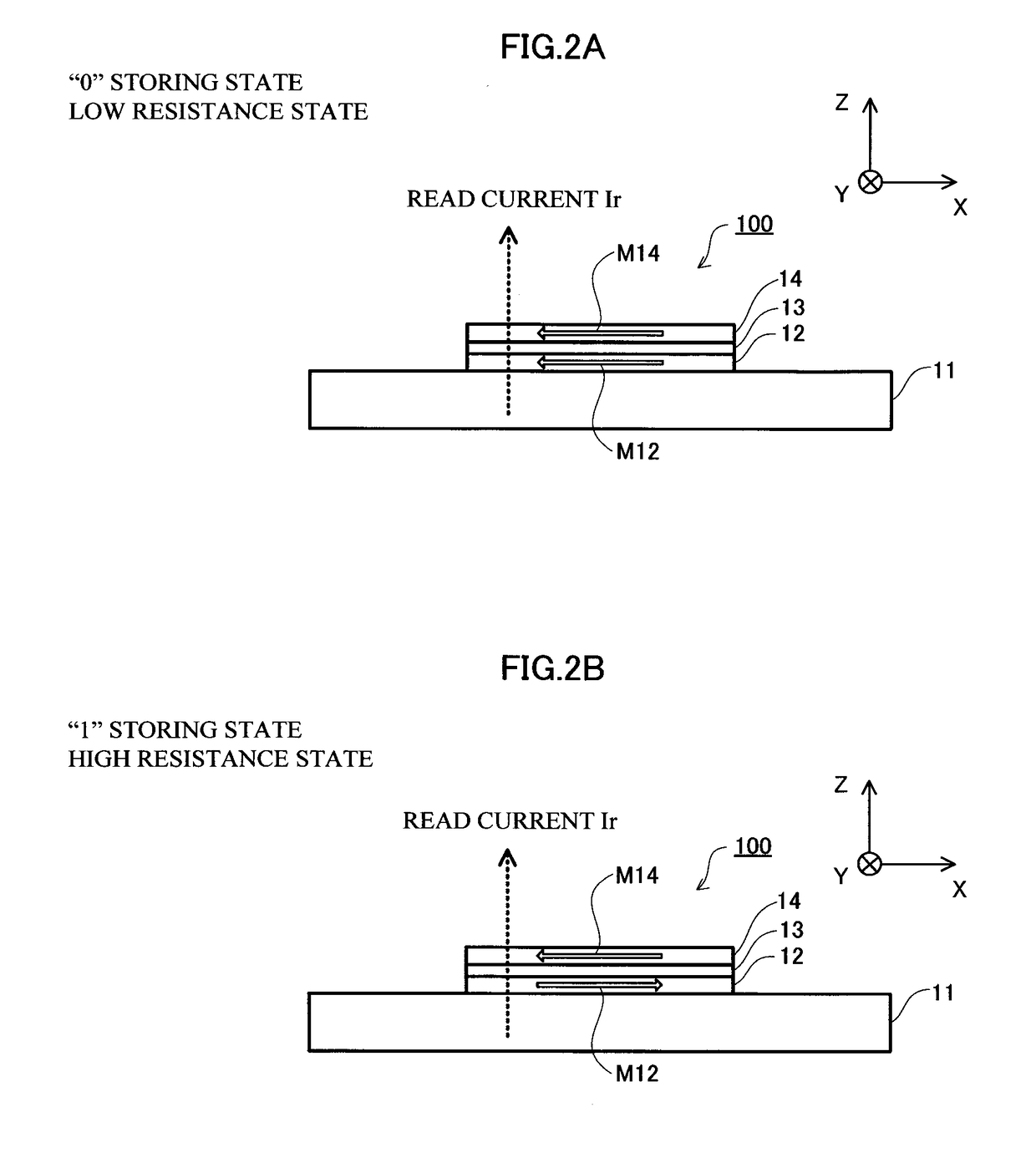Magnetoresistance effect element and magnetic memory device
a magnetic memory device and effect element technology, applied in the field of magnetoresistance effect element and magnetic memory device, can solve the problems of increasing the size of the memory cell, difficult to achieve highly symmetric rewrite property, and difficult to achieve highly symmetric retention property, and achieve high speed and symmetric rewrite property and retention property
- Summary
- Abstract
- Description
- Claims
- Application Information
AI Technical Summary
Benefits of technology
Problems solved by technology
Method used
Image
Examples
embodiment 1
[0087]Hereinafter, a magnetoresistance effect element according to Embodiment 1 is described with reference to FIG. 1 to FIG. 5. FIG. 1A illustrates a front view of a magnetoresistance effect element 100 according to Embodiment 1, FIG. 1B illustrates a side view thereof, and FIG. 1C illustrates a plan view (top view) thereof. The magnetoresistance effect element 100 includes a heavy metal layer 11, a recording layer 12, a barrier layer 13 and a reference layer 14 that are laminated. The longitudinal (elongation) direction (the left / right direction of the page of FIG. 1A) of the heavy metal layer 11 is defined as the X-axis direction. The short direction (the depth of the page of FIG. 1A) of the heavy metal layer 11 is defined as the Y-axis direction. The height direction (the upward / downward direction in the page of FIG. 1A) in which the respective layers of the magnetoresistance effect element 100 are laminated is defined as the Z-axis direction.
[0088]The heavy metal layer (conduct...
embodiment 2
[0135]It is necessary to stably fix the direction of the magnetization M14 of the reference layer 14 in order to stably write and read the stored data in the magnetoresistance effect element 100 according to Embodiment 1. It is effective that the reference layer 14 includes a laminated ferri-coupled layer in order to stabilize the magnetization M14 of the reference layer 14.
[0136]Hereinafter, an embodiment of a magnetoresistance effect element 101 including a laminated ferri-coupled layer as a reference layer 14 is described with reference to FIG. 9A to FIG. 9C.
[0137]In the present embodiment, the reference layer 14 has a laminated structure where a ferromagnetic layer 14a, a coupling layer 14b and a ferromagnetic layer 14c are laminated and laminated ferri-coupled. The ferromagnetic layer 14a and the ferromagnetic layer 14c are antiferromagnetically coupled by the coupling layer 14b. Other elements are essentially the same as in Embodiment 1.
[0138]It is desirable to use a ferromagn...
modified embodiment 1
[0154]Allocation of the resistance and the data of the magnetoresistance effect element is arbitrarily determined, and data “1” and data “0” may also be allocated to a low resistance state and a high resistance state, respectively.
PUM
 Login to view more
Login to view more Abstract
Description
Claims
Application Information
 Login to view more
Login to view more - R&D Engineer
- R&D Manager
- IP Professional
- Industry Leading Data Capabilities
- Powerful AI technology
- Patent DNA Extraction
Browse by: Latest US Patents, China's latest patents, Technical Efficacy Thesaurus, Application Domain, Technology Topic.
© 2024 PatSnap. All rights reserved.Legal|Privacy policy|Modern Slavery Act Transparency Statement|Sitemap



